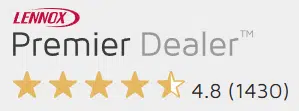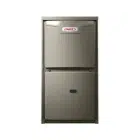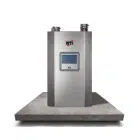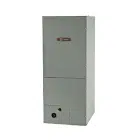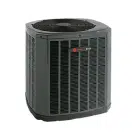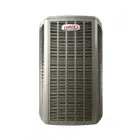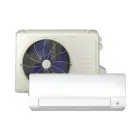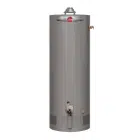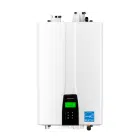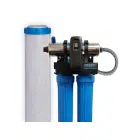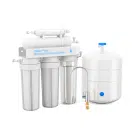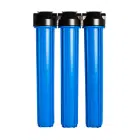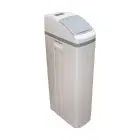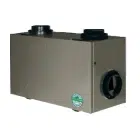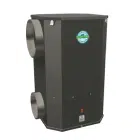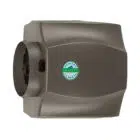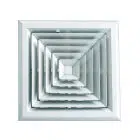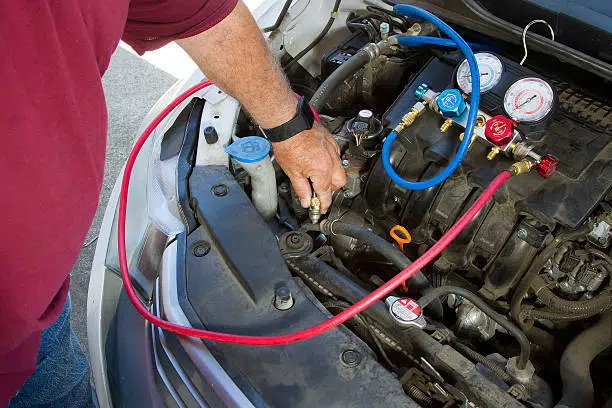
Table of Contents
With energy costs on the rise and Canadian winters showing no mercy, choosing the right gas furnace is more important than ever. A high-quality furnace not only keeps your home warm but also saves money on energy bills and reduces your carbon footprint. However, the wrong choice could lead to inefficient heating and costly repairs. Combine that with a neglected furnace filter, and you’re looking at compromised air quality and even higher energy usage. In this guide, we’ll break down everything you need to know to make the best decision for your home in 2025.
What Is a Furnace and Its Role?
At its core, a furnace is the heart of your home’s heating system. It takes in cold air, heats it, and distributes that warm air throughout your house via ducts. In Canada, the gas furnace reigns supreme because of its reliability and cost efficiency, especially during our brutal winters. Other types of furnaces include electric and oil models, but gas remains the go-to for its quick heating capabilities and lower operational costs.
💡Did you know?
A well-maintained gas furnace can last up to 20 years—if you keep up with regular maintenance, including changing your furnace filter every 2-3 months.
Types of Furnaces: Which One Is Right for You?
When shopping for a furnace, it’s crucial to know the pros and cons of each option. Here’s a breakdown in tabular form:
|
Type of Furnace
|
Pros
|
Cons
|
|---|---|---|
|
Gas Furnace
|
High efficiency, lower fuel costs, works well in cold climates
|
Higher upfront cost, requires a gas line
|
|
Electric Furnace
|
Lower installation cost, safer to operate, no need for a gas line
|
Higher energy bills, slower heating
|
|
Oil Furnace
|
Great for homes without gas lines, provides intense heat
|
Requires regular oil delivery, higher maintenance
|
For most Canadian homeowners, a gas furnace offers the best balance of efficiency and affordability.
Key Features to Look for in a Gas Furnace
Not all furnaces are created equal. When choosing a gas furnace, look for these essential features:
- High AFUE Rating: The Annual Fuel Utilization Efficiency (AFUE) measures how efficiently the furnace converts fuel into heat. Look for models with at least 90% AFUE.
- Two-Stage or Modulating Burners: These provide more consistent heating and better energy savings compared to single-stage burners.
- Easy-to-Replace Furnace Filters: Dirty furnace filters reduce airflow and force your furnace to work harder. Choose a model that allows for easy filter changes.
- Quiet Operation: Advanced designs include insulated cabinets and quieter blowers for less noise.
Smart Thermostat Compatibility: Pairing your furnace with a smart thermostat can optimize heating schedules and further lower energy costs.
Why Furnace Maintenance Matters
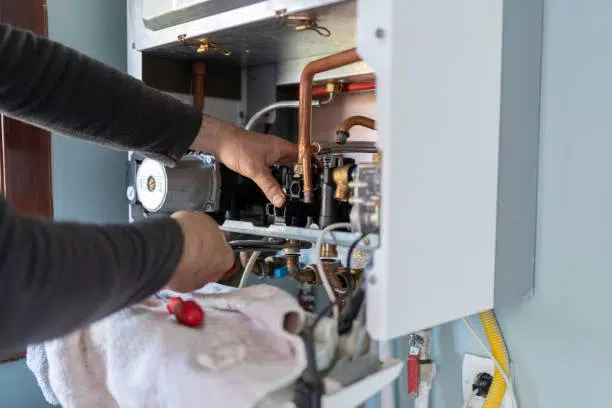
Even the best gas furnace won’t last without proper care. Regular furnace maintenance ensures your system operates at peak performance, extending its lifespan and preventing costly breakdowns. One of the simplest yet most effective maintenance tasks? Replacing your furnace filter. A clogged filter makes your furnace work overtime, leading to higher energy bills and reduced efficiency.
Signs You Need to Replace Your Furnace Filter
- Increased dust in your home.
- Weak airflow from vents.
- Furnace cycling on and off more frequently.
- Higher-than-usual heating bills.
- Strange noises, like banging or rattling.
- Inconsistent heating throughout your home.
- The furnace fails to start or stay on.
- Rising energy bills without increased usage.
Changing your filter regularly not only protects your furnace but also improves indoor air quality, keeping your family healthier.
Top Gas Furnace Models for 2025
Choosing a reliable gas furnace can feel overwhelming with so many options on the market. To make it easier, we’ve rounded up the top models for 2025:
- Trane S9V2 offers exceptional energy efficiency with a 96% AFUE rating. Its two-stage burner and quiet operation make it a favorite among homeowners looking for consistent comfort and minimal noise.
- Lennox EL296V stands out with its variable-speed blower, which ensures even heat distribution and greater energy savings. It’s also Energy Star certified, adding to its appeal for eco-conscious buyers.
- Carrier Infinity 96 boasts advanced smart thermostat compatibility and sealed combustion technology, providing both efficiency and safety. Its sleek design fits seamlessly into modern homes.
- Rheem Prestige Series combines a modulating burner with advanced humidity control, offering a cozy and moisture-balanced environment during the harshest winters.
- Goodman GMVC96 delivers a reliable and budget-friendly option with a 96% AFUE rating. It’s known for its durable construction and lifetime warranty on the heat exchanger.
|
Model
|
AFUE
|
Key Features
|
Price Range
|
|---|---|---|---|
|
Trane S9V2
|
96%
|
Two-stage burner, quiet operation
|
$4,500 - $6,500
|
|
Lennox EL296E
|
96%
|
Variable-speed blower, Energy Star
|
$4,000 - $6,000
|
|
Carrier Infinity 96
|
96%
|
Smart thermostat, sealed combustion
|
$4,700 - $7,200
|
|
Rheem Prestige
|
95%
|
Modulating burner, humidity control
|
$4,200 - $6,800
|
|
Goodman GMVC96
|
96%
|
Durable, budget-friendly
|
$3,800 - $5,500
|
Cost Breakdown: What to Expect When Buying a Furnace
Let’s talk numbers. The total cost of a new gas furnace in Ontario includes more than just the unit itself. Here’s a general breakdown:
Furnace Unit: $3,000 to $6,000
Installation: $1,500 to $3,000 (depending on complexity and ductwork needs)
Ongoing Maintenance: $150 to $300 annually (includes filter replacements and tune-ups)
Investing in a high-efficiency furnace may cost more upfront, but the long-term energy savings can significantly offset the initial expense. Additionally, Government Furnace Rebates in Ontario may be available to reduce costs. For example, Ontario’s Home Efficiency Rebate Program offers up to $5,000 in rebates for upgrading to an energy-efficient furnace. Learn more about these opportunities in our previous blog.
Professional Installation: Why Choose HVAC Service Solutions?
A furnace is only as good as its installation. Even the best gas furnace won’t perform efficiently if installed incorrectly. That’s where HVAC Service Solutions comes in. Our experienced technicians specialize in installing all types of furnaces, ensuring your system runs safely and efficiently from day one.
Why to Trust HVAC Service Solutions:
- Certified and trained HVAC technicians.
- Comprehensive post-installation testing.
- Transparent pricing with no hidden fees.
- Exceptional customer service—we’re not happy until you are.
Conclusion
Choosing the right gas furnace doesn’t have to be a daunting task. By understanding the different types of furnaces, knowing what features to prioritize, and staying on top of maintenance (like replacing that furnace filter), you’ll be well on your way to a warm, energy-efficient home. For expert advice, installation, and maintenance, trust Hvac Service Solutions to deliver the comfort and reliability you deserve.
Ready to take the next step? Contact us today to find the perfect furnace for your home.
Frequent Asked Questions
What is the best type of furnace for Canadian winters?
The best type of furnace for Canadian winters is a high-efficiency gas furnace. It offers powerful heating, lower operational costs, and can handle extreme cold effectively. Gas furnaces are widely available and come with advanced features like two-stage burners and variable-speed blowers for consistent comfort. Additionally, they are more eco-friendly compared to oil furnaces. Make sure to choose a model with an AFUE rating of 90% or higher for maximum efficiency. Proper insulation and regular filter replacements will also ensure optimal performance.
How often should I replace my furnace filter?
A furnace filter should generally be replaced every 2-3 months. However, if you have pets, allergies, or live in a dusty area, you may need to replace it monthly. A clean filter improves airflow, enhances energy efficiency, and prevents debris from damaging the furnace components. Ignoring filter maintenance can lead to higher energy bills and even furnace failure. Regularly checking and replacing your filter is one of the simplest ways to ensure your furnace operates efficiently.
What is AFUE, and why is it important?
AFUE stands for Annual Fuel Utilization Efficiency, and it measures how efficiently a furnace converts fuel into heat. A furnace with a 90% AFUE rating, for example, turns 90% of the fuel into heat, while the remaining 10% is lost through exhaust. High AFUE ratings indicate better energy efficiency, which translates to lower heating bills. Modern high-efficiency gas furnaces often have AFUE ratings of 95% or more, making them ideal for homeowners looking to save on energy costs while reducing their environmental footprint.
Are there any rebates available for purchasing a new furnace in Ontario?
Yes, Ontario offers government rebate programs for energy-efficient heating systems, such as the Canada Greener Homes Grant. This program provides financial incentives for upgrading to high-efficiency gas furnaces with a minimum AFUE of 95%. Homeowners can receive rebates of up to $5,000 for qualifying upgrades. These rebates help reduce the upfront cost of purchasing and installing a new furnace. For more details, check out our dedicated blog on government rebates.
What are the signs that my furnace needs to be replaced?
Signs that your furnace may need replacement include frequent breakdowns, uneven heating, strange noises, and skyrocketing energy bills. Additionally, if your furnace is over 15-20 years old and requires costly repairs, it’s often more economical to replace it with a high-efficiency model. Yellow pilot light flames, excessive dust, and poor air quality are other indicators of a failing system. Replacing your old furnace can improve comfort, energy efficiency, and indoor air quality.
How much does it cost to install a new furnace?
The cost of installing a new furnace in Canada ranges from $4,500 to $9,000, depending on the type of furnace, its efficiency rating, and installation complexity. Gas furnaces tend to be more expensive than electric models but offer significant long-term savings on energy bills. Additional costs may include ductwork modifications, smart thermostat installation, and ongoing maintenance. While the initial investment may seem high, energy-efficient models and government rebates can significantly reduce overall expenses.
What is the lifespan of a gas furnace?
A well-maintained gas furnace typically lasts 15-20 years. Regular maintenance, such as annual inspections and timely filter replacements, can extend its lifespan even further. However, factors like poor installation, irregular maintenance, and heavy usage can shorten the furnace’s lifespan. If your furnace frequently needs repairs or shows declining efficiency despite regular upkeep, it may be time to consider a replacement. Investing in a high-quality model and professional installation ensures long-term reliability.
What are the most energy-efficient furnace models for 2025?
Some of the most energy-efficient gas furnace models for 2025 include the Trane S9V2, Lennox EL296E, and Carrier Infinity 96, all boasting AFUE ratings of 96%. These models feature advanced technologies like modulating burners, variable-speed blowers, and compatibility with smart thermostats for optimized energy usage. They not only deliver superior heating performance but also help homeowners save on utility bills. Choosing a high-efficiency model ensures comfort while reducing your environmental impact.
What maintenance tasks can I do myself to keep my furnace running efficiently?
Simple DIY maintenance tasks include regularly replacing or cleaning the furnace filter, ensuring the area around the furnace is clean and free of debris, and checking the thermostat settings. You can also inspect vents and ducts for blockages and vacuum them if necessary. However, for more complex tasks like inspecting the heat exchanger or cleaning the burner assembly, it’s best to call a professional HVAC technician. Regular DIY maintenance combined with annual professional tune-ups ensures peak performance.
Why is professional installation important for a new furnace?
Professional installation ensures your furnace operates safely, efficiently, and reliably. An improperly installed furnace can lead to poor performance, higher energy bills, and even safety hazards like carbon monoxide leaks. Certified HVAC technicians follow local building codes and manufacturer guidelines to guarantee optimal operation. They also perform post-installation tests to ensure everything is working as it should. Choosing a reputable company like TheHvacService provides peace of mind and maximizes the lifespan of your investment.
Share
